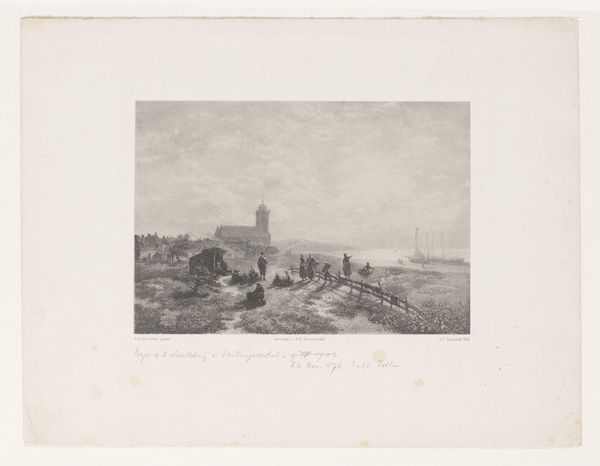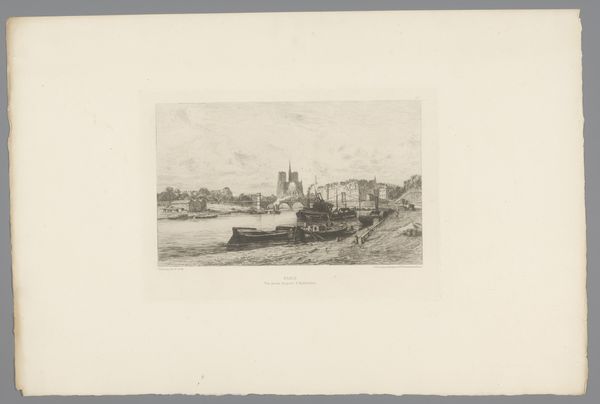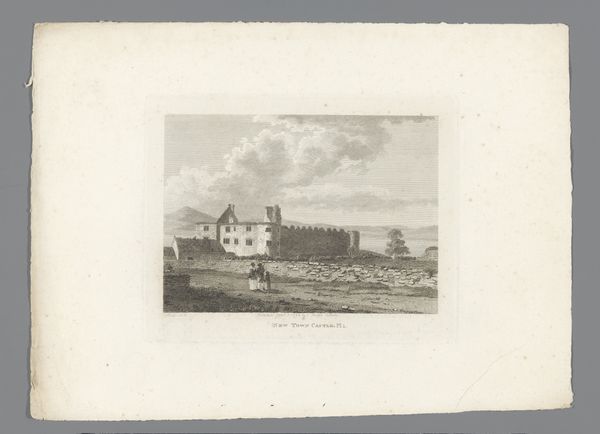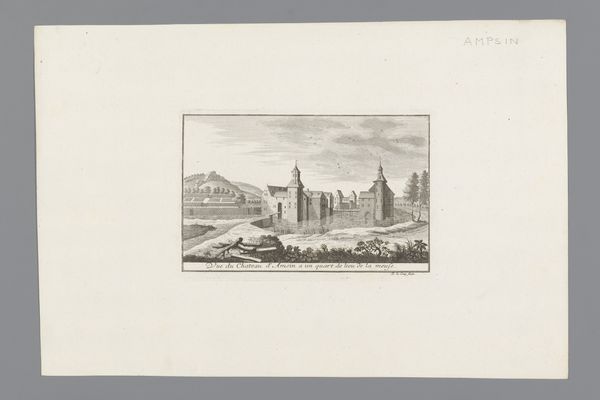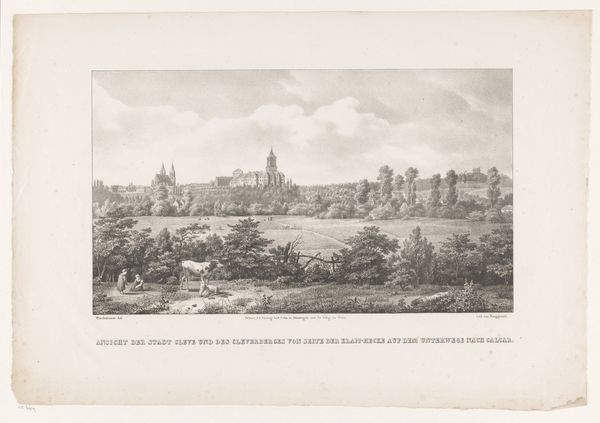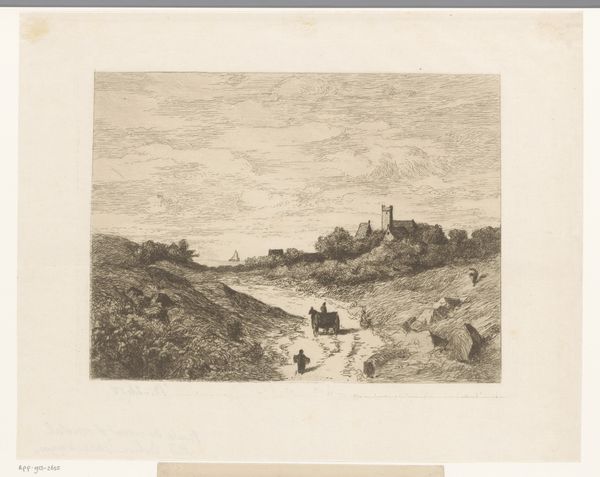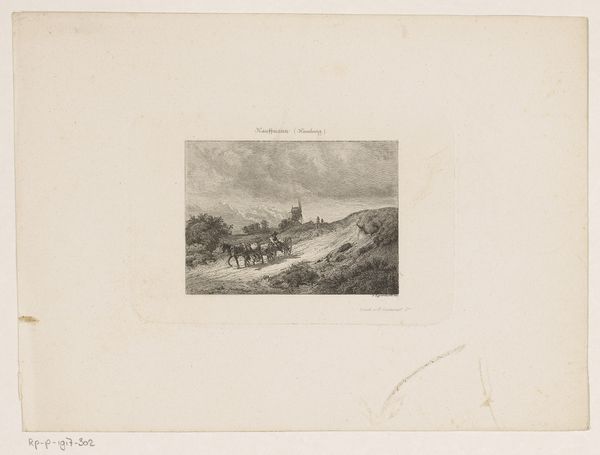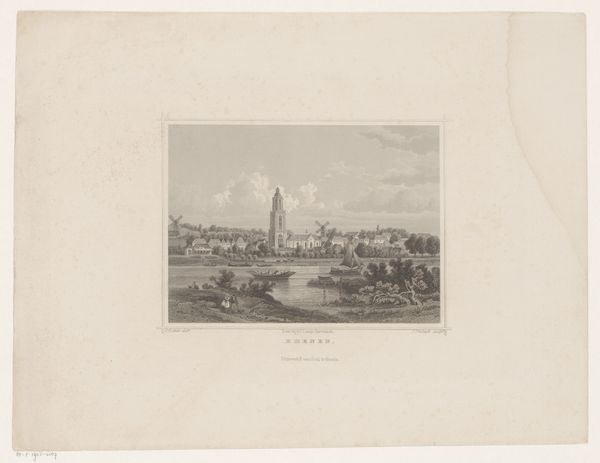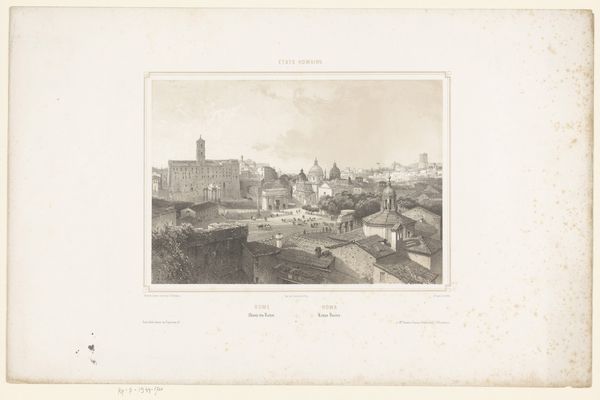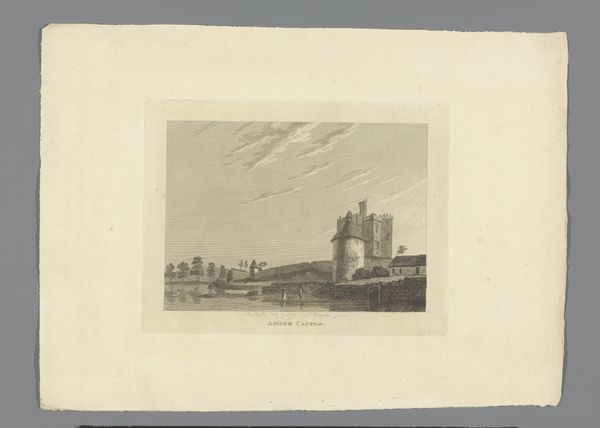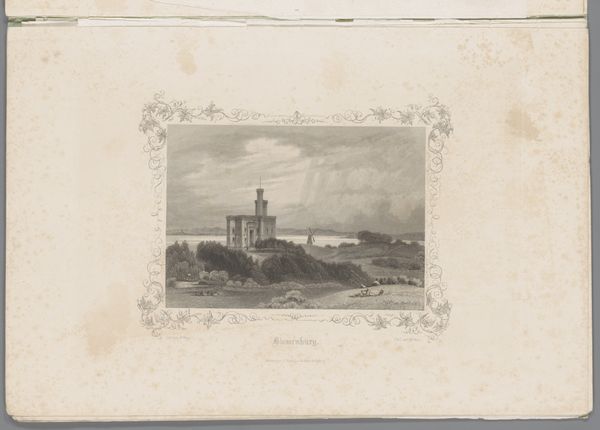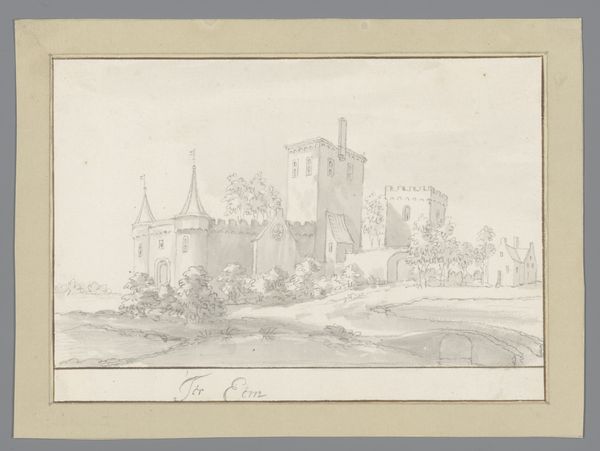
Dimensions: height 358 mm, width 550 mm
Copyright: Rijks Museum: Open Domain
Curator: Welcome. Here we have "View of the Ruins of Koldinghus," an 1851 engraving by Louis-Julien Jacottet, currently held at the Rijksmuseum. Editor: It evokes such a powerful sense of melancholic beauty, doesn't it? The ruin sits atop the rise, rendered in delicate lines, overlooking a vast, grey landscape. It's beautiful but desolate. Curator: Yes, Jacottet was capturing the Romantic era's fascination with ruins, particularly their symbolic connection to history and the passage of time. Editor: But it's more than just picturesque decay, isn’t it? Koldinghus was destroyed by fire during the Napoleonic Wars. It embodies ideas about conflict and instability in Denmark at the time. How was this image of ruin consumed in the local popular imaginary of the moment? Curator: Precisely. Ruins like Koldinghus became potent symbols in the 19th century, reminders of national identity but also of vulnerability to outside forces and internal dissent. Consider also how prints such as this helped popularize specific nationalistic viewpoints. The Romantics aimed to construct not simply reflect collective experience. Editor: You’re right. The artist isn't simply recording a ruin. They are presenting us with a politicized image meant to resonate with Danish viewers deeply, sparking questions about legacy and national renewal in times of turmoil. I am now also thinking of the workers and people who physically produced Jacottet's artistic vision, contributing their labor and experiences to the artistic process. Curator: Furthermore, think about the printmaking process itself, enabling mass distribution and repeated viewings across various social strata, contributing to constructing that “popular imaginary" we discussed. Editor: It’s a complex work then, more than just an attractive scene, opening up considerations around Danish history, nationalism, labor, and how imagery works on a broad scale. Curator: Indeed. Jacottet's engraving allows us to reflect on both the aesthetics of ruins and their function within broader sociopolitical discourses. Editor: I see now an interesting contrast in how this work serves as a beautiful art object and also as an expression of socio-political tension, both back then and today.
Comments
No comments
Be the first to comment and join the conversation on the ultimate creative platform.
